Items
Site
The Medicine Chest
keywords is exactly
law
-
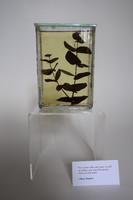
Eucalyptus
"The plants [dislayed in this cabinet] were bought from the Adderley Street flower market in central Cape Town and are used by the sellers for medicinal purposes to treat chest and respiratory problems, with the leaves of the eucalyptus added to a bath and those of the protea infused in hot water and drunk as a broth. The flower sellers trading in Trafalgar Place and along Adderley Street have been doing so since at least the mid-1880s but became viewed as threats to the local flora by the European settlers at about the same time the medicine chest was first introduced to the city at the beginning of the 20th century. The settlers initially preferred to cultivate plants imported from their home countries to indigenous varieties, introducing many species to South Africa for nostalgic or practical reasons (subsequently problematic for local biodiversity) (Van Sittert 2002: 103). In the wake of emerging white nationalism in the 1890s, interest in indigenous plants gained momentum and was deployed to create a sense of belonging to the ‘foreign’ land (Boehi 2013: 133). A botanical discourse was mobilised to underscore ideas about identity and belonging, such as ‘roots’ and ‘ideas of rootedness’, and laws regulating flower picking (which usually occurred on the mountain) were passed in this period and were secured by the Wild Flower Protections Act in 1905 and an amendment thereto in 1908 (Boehi 2013: 133)"(Liebenberg 2021: 275). -

Proteas
"The plants [dislayed in this cabinet] were bought from the Adderley Street flower market in central Cape Town and are used by the sellers for medicinal purposes to treat chest and respiratory problems, with the leaves of the eucalyptus added to a bath and those of the protea infused in hot water and drunk as a broth. The flower sellers trading in Trafalgar Place and along Adderley Street have been doing so since at least the mid-1880s but became viewed as threats to the local flora by the European settlers at about the same time the medicine chest was first introduced to the city at the beginning of the 20th century. The settlers initially preferred to cultivate plants imported from their home countries to indigenous varieties, introducing many species to South Africa for nostalgic or practical reasons (subsequently problematic for local biodiversity) (Van Sittert 2002: 103). In the wake of emerging white nationalism in the 1890s, interest in indigenous plants gained momentum and was deployed to create a sense of belonging to the ‘foreign’ land (Boehi 2013: 133). A botanical discourse was mobilised to underscore ideas about identity and belonging, such as ‘roots’ and ‘ideas of rootedness’, and laws regulating flower picking (which usually occurred on the mountain) were passed in this period and were secured by the Wild Flower Protections Act in 1905 and an amendment thereto in 1908 (Boehi 2013: 133)" (Liebenberg 2021: 275). -
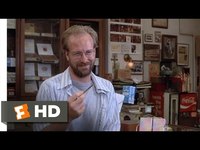
Weighing Smoke
PAUL That’s the man. Well, Raleigh was the person who introduced tobacco in England, and since he was a favourite of the Queen’s – Queen Bess, he used to call her – smoking caught on as a fashion at court. I’m sure Old Bess must have shared a stogie or two with Sir Walter. Once, he made a bet with her that he could measure the weight of smoke. DENNIS You mean, weigh smoke? PAUL Exactly. Weigh smoke. TOMMY You can’t do that. It’s like weighing air. PAUL I admit it’s strange. Almost like weighing someone’s soul. But Sir Walter was a clever guy. First, he took an unsmoked cigar and put it on a balance and weighed it. Then he lit up and smoked the cigar, carefully tapping the ashes into the balance pan. When he was finished, he put the butt into the pan along with the ashes and weighed what was there. Then he subtracted that number from the original weight of the unsmoked cigar. The difference was the weight of the smoke. TOMMY Not bad. That’s the kind of guy we need to take over the Mets. PAUL Oh, he was smart, all right. But not so smart that he didn’t wind up having his head chopped off twenty years later. (Pause) But that’s another story. -
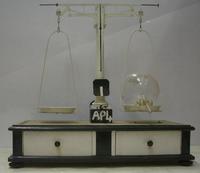
Weighing Air
An example from demonline (UCT Physics Department’s website with descriptions of educational demonstrations). Its descriptions reads: "A spherical flask of about 1 litre is suspended from one arm of a crude chemical balance. It is counterpoised by weights in the other pan, the tap attached to the sphere being open. This gives (roughly) the true weight of the glass. Unhook the sphere from the stirrup, attach the rubber tube from a rotary vacuum pump to the glass tube and evacuate for around 30s. Close tap, and re-attach stirrup. There will now be an upthrust on the flask equal to the weight of air removed, and the weights in the other pan will have to be reduced by about 1.2 g to restore the balance. Open the tap again: the air can be heard rushing into the flask (class must keep quiet), and the flask suddenly descends again". -

Lodestone
An example from demonline (UCT Physics Department’s website with descriptions of educational demonstrations). Its description reads: ‘A lodestone is suspended by a string. Show that it rotates on bringing a magnet near it. Dip it into iron filings and show that it picks them up.’ -
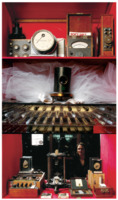
Capitance
"Strategies such as juxtapositioning also served to highlight poetic and emotive qualities in fields not known for encouraging them, as in a cabinet curated by Langerman titled Capitance. This featured a range of instruments from the Physics department used to measure electrical currents (galvanometers, capacitors and Wheatstone bridges); a crystal goniometer measuring crystal face angles and crystal 175 from the crystal collection in Geological Sciences; M.R. Drennan’s models of the human embryo and a wax model of flesh; and a white tutu from the School of Ballet. In combining this selection of scientific instruments with a tutu, Langerman made allowance for the materials to be considered in a more poetic light, inviting the viewer to consider how a grand jeté defies the laws of physics, for example" (Liebenberg 2021: 186). -

A teeth mould guide
"The large quantity of papers in the BC666 collection pertaining to dental matters – which includes ‘legal and financial papers of the dental practice, papers of the various dental societies to which Walter belonged from 1905 to 1934’ and letters on various dental matters, as well as a large section devoted to correspondence, memoranda and notes on the Medical, Dental and Pharmacy Act of 1928 – shows he was ‘very active in dental politics’ (Hart & Lydall 1981: 1). As an 'office-bearing member of the Dental Society of the Cape Province, and a member of the South African Dental Association, he was the key figure in formulating and presenting the dentists’ case against unqualified dental mechanics in the proposed new medical bill, which was passed in 1928 as the Medical, Dental and Pharmacy Act' (Hart & Lydall 1981: 1). This act was considered a milestone in the development of organised medical, dental and pharmaceutical practices in South Africa, establishing a single set of regulations for these professions across the country (Ryan 1986: 149–151). It was also, however, one of a series of laws passed in South Africa that have regulated indigenous medical practices since the 19th century. Legislation passed in 1862 prevented sangomas from practicing (Paarl in Bishop 2010: 14), and the 1928 act barred inyangas from practicing in all parts of the country except Natal, where they could continue to practice if granted a license (Flint in Bishop 2010: 14–15). The act also banned the indigenous use of ‘European’ methods of diagnosis and treatment, for example forbidding the use of stethoscopes by inyangas (Bishop 2010: 16)" (Liebenberg 2021: 53 - 55). -
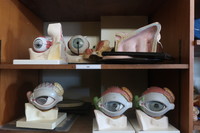
Seeing
Educational models found in the Anatomy workshop: "Borrowing from Herbert Read’s art historical discussion on looking, Digby posits that the biomedical practitioner’s generally critical attitudes were shaped in part by their limited recognition of indigenous medicine during this period – ‘what we see is inseparable from how we see; the eye is not innocent, and vision is partial’ (Digby 2006: 356) and, quoting Read, ‘we see what we learn to see, and vision becomes a habit, a convention, a partial selection of all there is to see’ (in Digby 2006: 356). Accordingly, Digby argues that the Western practitioners would have had, at best, only a partial view of the different medical systems in South Africa during this period (Digby 2006: 357) and probably only to the extent that it was a threat to their own livelihood and authority – as evidenced in the 1928 Medical, Dental and Pharmacy Act that Floyd helped instate" (Liebenberg 2021: 55).


